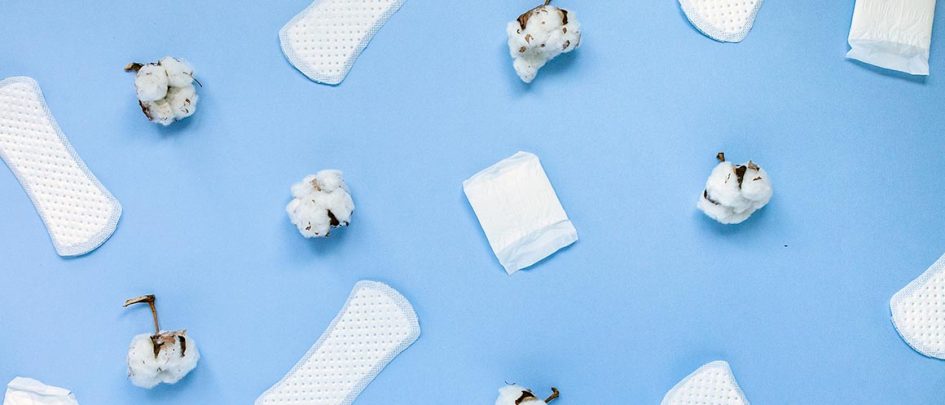Starting your period can be a scary thought, but it’s a completely normal part of growing up, and is definitely not something to be afraid of. From products to buy to tips on using tampons.
Read on for practical tips, help and advice for when you first start your period.
-
Read packaging
You should read the packaging carefully to try to find out what tampons and pads are made from before buying because most are made from synthetic materials that are made without care for the environment or your health.
-
Avoid synthetic materials
Try to avoid tampons made from materials like rayon and viscose which are man made (synthetic) and pads that use lots of plastic, and synthetic materials that claim to be “cotton-like” as they are largely made from synthetic materials that are almost impossible to get rid of in the environment.
-
Choose natural products
Organic cotton tampons and plastic and chemical-free pads are recommended by many gynaecologists in order to avoid the risk of allergic reaction caused by exposure to synthetic materials and chemicals. Try to choose natural products whenever possible.
-
Check your breasts
When your periods start for the first time, it is important to start checking your breasts each month so that you learn what is normal for you so that if something unusual is noticed you can get it checked out straight away by a doctor. Look at the diagrams and the instructions on how to examine the breasts and start the routine of checking your breasts after your period has finished each month.
-
Keep track of your cycle
Keeping a menstrual diary helps you to work out when your next period should start. This will also help you to know when you need sanitary pads or tampons. Also, you will be able to know if your period is late or early and will have a record if you need to see your doctor about your periods.
-
Talk to friends
Puberty can bring about lots of social pressures along with changes in your body. It’s difficult to remember that a key priority is to accept and feel good about yourself and your body. This can seem challenging at times, especially as the changes that your body goes through can take less or more time than those of your friends. So remember that whatever you’re feeling, there are many others who probably feel just the same way as you. You are not the only person going through a big change, so talk about how you are feeling to your family and friends.
-
Using tampons
Before inserting a tampon always give the cord a little tug to ensure it is secure inside the tampon. The cord hangs outside of the body to help you to remove the tampon when you need to change it. You should change the tampon at least every four hours. Make sure that you wash your hands before and after doing so. Always remember to remove the tampon before inserting a new one. At the end of a period when there will be only a very small amount of blood, it is better to use a pad rather than a tampon. Some practice is needed before you get used to putting in a tampon, but you should not use a tampon unless you are having a period. Using them when you do not have a period can cause dryness and irritation, and will absorb the protective mucous that your vagina produces to keep it clean.
-
A Quick Note on Toxic Shock Syndrome
Toxic Shock Syndrome (TSS) is an illness which can be linked with tampon use, there’s no need to be alarmed or scared if you make sure you use tampons safely! Anyone who has periods should be vigilant and be familiar with the symptoms of TSS. Read carefully the tampon instruction leaflets found in the packs before starting to use tampons.Toxic Shock Syndrome (TSS) is a rare but potentially fatal disease caused by a particular type of bacteria that can produce toxins in the body. The symptoms of TSS come on fast and are often severe. Menstrual TSS has been linked to the use of super-absorbent and synthetics in tampons.1
The symptoms of TSS can occur suddenly, and at any time during menstruation. Be aware of these symptoms, which need not be present all at the same time:
- Sudden high fever (102°F, 39°C or more)
- Nausea or vomiting
- Diarrhoea
- Headache
- Sore throat
- Dizziness
- Fainting or near fainting
- Rashes that look like sun-burn (skin peeling may occur days later)
- Muscular pain
If you get any of these symptoms, you must remove your tampon and do not use any more. Keep hold of the tampon for analysis and seek immediate medical attention and be sure to inform your doctor that you’re menstruating and using tampons and that you are concerned about TSS.
Independent research conducted by Dr. Tierno at New York University Medical School concluded that the bacterium causing TSS did not produce toxins in the presence of 100% cotton tampons. Results of a study, published in The Journal of Infectious Diseases in Obstetrics and Gynaecology, suggest that the use of 100% cotton tampons may reduce the risk of Toxic Shock Syndrome compared with tampons that contain rayon.
The study was carried out on 20 tampon varieties, including Natracare 100% cotton tampons, and concluded that all-cotton tampons did not produce the dangerous TSS toxin from the bacteria Staphylococcus aureus, while other tampons did.
The paper states that, “The incidence of reported cases of Toxic Shock Syndrome has declined since the removal of high absorbency fibres from tampons, such as polyacrylate rayon, polyester and carboxymethyl-cellulose (CMC). However, the disease continues to occur in young menstruating women using the newer less absorbent tampons made of viscose rayon with and without cotton.”
The summary to the paper stated, “All-cotton tampons did not produce TSST-1. This is likely because cotton provides fewer factors to favour TSST-1 production compared with fibres previously removed from tampons (CMC, polyester, polyacrylate rayon)… “In sum, women who are without protective levels of antibody to TSST-1 and use non all-cotton tampons are at the greater risk of TSS.”
1. P.M. Tierno Jnr, B.A. Hanna, Propensity of Tampons and Barrier Contraceptives to Amplify Staphylococcus Aureus Toxic Shock Syndrome Toxin. Journal of Infectious Diseases in Obstetrics and Gynaecology 2, 140-145 (1994).













No video?!??? I came here for the video!
Dissapointed 🙁
Oh no! We’ll have to make a video as well! We hope it was still helpful to read our advice!
Tnx
😄
I just started using your product this cycle and I LOVE IT. I bought it because you’re the ONLY brand sold IN MY ENTIRE CITY that has tampons for lighter flow days. I used to only use tampons with applicators and was kinda nervous about using one without it but it worked out perfectly. It doesn’t hurt a bit when I remove it ans that’s a problem I tend to encounter with other synthetic brands.
That’s amazing! We’re so pleased you like the tampons and that ours are available to you locally. If you ever do want to switch back to applicator tampons, ours are made from cardboard and are biodegredable and compostable!
Thanks for giving so much advice 👌👌
You’re welcome Celine, we hope it’s been helpful!
I am nine years old and I am expecting my period early. I am extremely nervous and need advice. I don’t talk to my family because of personal reasons. But what I’m trying to say is if your a girl like me, this website is very helpful and preparing.
So glad to help Faelynn! It can feel quite scary starting your period because it’s new, we hope it will be a better experience for you – now your armed with some knowledge!
Talk to your family and FRIENDS they will help you I already have had my period go for it
My 13 year old daughter has just stared her period this is so helpful thank u
I’m very scared of my period can u help
please make a video on this to be more helpful .
I’m 13 and I just started my period today for the first time. I’m super nervous and scared especially since I have to go to school tomorrow but this was very helpful Thankyou
Good luck! We are glad we could help, even a little!
Just came here to see if there were any tips for tampons without an applicator with it which is what I got from this brand, but not finding anything. My vagina is too dry. We would really benefit from a cardboard applicator, perhaps.
I just started my period recently as a 19 year old woman. Crazy, I know. I have learned a lot about periods by watching other women go through it, but it was so nice to have a couple of tips on how to deal with it. Thank you!
perfect